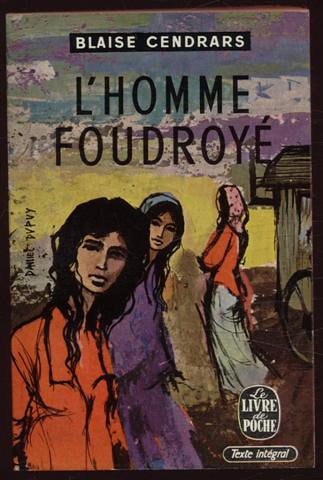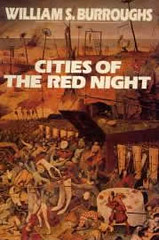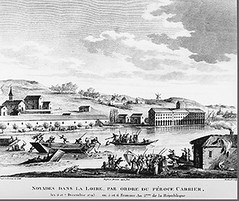Yearly Archives: 2008
Sylvester and set theory
Do Ya Wanna Funk (1982) Sylvester [Amazon.com] [FR] [DE] [UK]
Gay icon Sylvester James would have turned 60 today if he had not died from AIDS 20 years ago.
“Over and Over[1],” released in 1977 on Fantasy Records is WMC#75.
From a set-theoretical point of view, the Venn diagram of “Over and Over“intersects via whatlinkshere with the following compilations:
- François Kevorkian‘s Choice: A Collection of Classics
- Dave Lee‘s Jumpin’ series
- Brian Chin‘s Club Classics & House Foundations series
- Norman Jay‘s Good Times series
—Sholem Stein, musicologist, dance music connoisseur and genre theorist
What S. Stein means in the above quote is that “Over and Over” is featured on the mentioned albums.
Sylvester was firmly planted in the American disco scene but was popular too in Europe at the time and the rest of the jet set world.
His best-known songs are the Hi-NRG classics “You Make Me Feel (Mighty Real)“[2] (a previous WMC) and “Do You Wanna Funk,” songs of simultaneously gay liberation in the United States and Saint-Tropez chic in Europe.
“Do You Wanna Funk“[3] is World Music Classic #76.
I had a list of three thousand words arranged in advance, and I used all of them.
Litblog A journey round my skull brings Blaise Cendrars interviewed for Paris Review in 1966 in which Cendrars reveals the importance of vocabularies to his work. Vocabulary is a linchpin to my own publishing: every subject or sensibility can be expressed in a core vocabulary … I notice people’s idiosyncratic word usage … I noticed last summer that Cities of the Red Night uses the word surmise quite frequently.
Cendrars went one step further in a loosely constrained writing technique, stating that:
- “For several years, each time that I prepare to write a book, I first arrange the vocabulary I am going to employ. Thus, for L’Homme foudroyé, I had a list of three thousand words arranged in advance, and I used all of them. That saved me a lot of time and gave a certain lightness to my work. It was the first time I used that system.” –from [1] via [2]
More Cendrars eye candy from my Flickr account[3].
Cult fiction item #9: “Language is to the brain as the tapeworm is to the intestines”
Cover art of Cities of the Red Night depicting Brueghels “The Triumph of Death“.
I read Cities of the Red Night this July while in Spain; I had to let it ferment for a while and unfurl it. it was a profound reading experience; and my first semi-sustained one after my first and only aborted attempt to read Burroughs by way of Naked Lunch.
I have the fondest memories of Burroughs in Drugstore Cowboy, and his Gus Van Sant-directed appearance on MTV with Thanksgiving Prayer[1] (unavailable in Europe).
Cities of the Red Night stated that spontaneous ejaculation is a heroin withdrawal symptom. This caught my attention. Today, I looked it up and it is apparently confirmed by medical literature. The novel is the perfect introduction to Burroughs’s whole language is a virus trope, later adopted by the likes of Laurie Anderson, Steven Shaviro and other postmodernists.
From my wiki:
Cities of the Red Night is a novel by William S. Burroughs. It was the first book in the final trilogy of the beat author, and was first published in 1981. Drugs play a major part in the novel, as do male homosexuality. The plot of this non-linear work revolves around a group of revolutionaries who seek the freedom to live under the articles set out by Captain James Mission. At the same time in near present day, detective Clem Snide is searching for a lost boy, abducted for some sort of sexual ritual. Another subplot weaved in thematically through the narrative is a world plagued by a fictional disease, Virus B-23, that destroys humanity and is sexually transmitted and sexual in nature, causing for example spontaneous orgasms. Addiction to opiates provides some resistance to it. The disease is viral, and, at first, it appears to be an allusion to AIDS, although, it must be remembered that the first case of AIDS was not discovered until after the book was first published.
See also:’the cities of the red night were six in number, alternate history, Dr Benway, Nothing is True, Everything is Permitted
Finally, whence the quote came:
“Self-identity is ultimately a symptom of parasitic invasion, the expression within me of forces originating from outside. Language is to the brain as the tapeworm is to the intestines. Even more so: it may just be possible to find a digestive space free from parasitic infection, but we will never find an uncontaminated mental space. Strands of alien DNA unfurl themselves in our brains, just as tapeworms unfurl themselves in our guts. Not just language, but the whole quality of human consciousness, as expressed in male and female is basically a virus mechanism.” —Cities of the Red Night
Triumph of Death (1562) – Pieter Brueghel the Elder
J. M. H. Berckmans (1953– 2008)
Belgian writer J. M. H. Berckmans (1953– 2008) died yesterday. Alternative Flanders mourns.
He was Flanders’ celebrated cult author and the darling bipolar genius of the alternative press (De Morgen and Humo); where he played his role of tortured artist sometimes reluctantly, sometimes willingly.
To me, J. M. H. Berckmans is the literary equivalent of photographer Stephan Vanfleteren[1]. Vanfleteren photographs real life outcasts and misfits of the kind featured in the novels of Berckmans.
Berckmans debuted with Walter Soethoudt in 1977.
Soethoudt was the first Flemish printer to translate and publish Sade, years before Bert Bakker did the same in The Netherlands. He was printer-for-hire with an interesting bibliography: partly risqué[2] and sensational[3][4], partly literary fiction by authors such as Georges Adé, Heere Heeresma, René Gysen, Gust Gils, Freddy de Vree, Claude Krijgelmans, Patrick Conrad, Louis Willems and Jef Geeraerts. These authors also often translated for Soethoudt and published more often than not under pseudonyms for his imprints.
Soethoudt was no Eric Losfeld, but Belgian’s nearest equivalent. Ah, the glorious days of literary mystifications! Read all about them in Soethoudt’s 2008 autobiography titled Uitgevers komen in de hemel [5], edited by Harold Polis, Berckmans’s last publisher.
Adieu Berckmans. I’m sort of sorry I missed your show with Kris Verdonck in March of 2006 at ScheldApen (see news article above), but I’m sure much fun was had by all.
The bawdy origins of rock and roll
“You probably don’t doubt that the origins of rock and roll are bawdy in nature. You’ve read Gershon Legman and his fellow travelers to take note. You know why Scheherazade was not killed by the king.
[Youtube=http://www.youtube.com/watch?v=UlALQf3fahM]
Yet you don’t know American record label Federal Records and their 1951 “Sixty Minute Man“[1], on which a male singer boasts of being able to satisfy his girls with fifteen minutes each of “kissin'” “teasin'” and “squeezin'”, before “blowin'” his “top.” The single reached #1[2] on the R&B chart in May 1951 and stayed there for a 14 weeks. “Sixty Minute” defined what was to become rock and roll which has always been about wine, women and song. —The bawdy origins of rock and roll, Sholem Stein, Cincinnati, Ohio, 1998, in a Pleasantville review.”
Note by the editor: “Big Long Slidin’ Thing” is another example in the category “dirty blues,” an often-overlooked category in rock and roll historiography.
[Youtube=http://www.youtube.com/watch?v=YTyMuxTyfiI]
“Sixty Minute Man,” “Big Long Slidin’ Thing“[3] and “Number One” (the Patrice Rushen song, which I managed to sneak in by footnote) are WMC #72, 73 and 74.
You may also like Tav Falco and Alex Chilton
Tomorrow it’s been 10 years since Charlie Feathers died.
You probably discovered him by listening to The Cramps in the eighties. Maybe via the Born Bad series.
[Youtube=http://www.youtube.com/watch?v=iUA9lOzDi2A&]
This track is the hiccup-styled “I Can’t Hardly Stand It.” It’s WMC #71.
Discogs has its first appearance on The Cramps‘s 1980 cover of the composition, released on I. R. S. Records.
If you like C. Feathers, you may also like Tav Falco and Alex Chilton.
Whither now, anarchitecture?
[Youtube=http://www.youtube.com/watch?v=Q4A5ybTAOWw&]
Some Office Baroque footage, Some footage similar to Office Baroque
Gordon Matta-Clark died thirty years ago today. He stayed in Antwerp for a while in 1977, just before his death, working with Florent Bex, creating Office Baroque, which he called anarchitecture. Pieces of his “building cuts” were sold around the world[1].
I like him, much as I like the near-contemporary and also short-lived Robert Smithson. Whither now, anarchitecture, and other visionary environments?
“I’m mad as hell”
In answer to your comment[2], yes, it feels sometimes as if I have reached the limits of appreciative criticism.
I dedicate to you, Lichanos, Network, WCC #61.
[Youtube=http://www.youtube.com/watch?v=q_qgVn-Op7Q]
Scrub to 2:48 for “I’m mad as hell and I’m not going to take this any more“
“Because he had a hairy backside”
Prompted by my post on the drownings of Carrier and esp. Paul Rumsey‘s gracious comments[1], Drowning by Numbers by Peter Greenaway is WCC #60.
[Youtube=http://www.youtube.com/watch?v=ExXW9lObzxg]
Documentary (1/3) on Drowning by Numbers
Drowning by Numbers is a 1988 film directed by Peter Greenaway.
The film’s plot centers on three women — a grandmother, mother and daughter — each named Cissie Colpitts. As the story progresses each woman successively kills her husband, out of dissatisfaction with them, one Cissie stating: “Because he had a hairy backside“.
The structure, with similar stories repeated three times, is reminiscent of a fairy tale. The link to folklore is further established by Madgett’s son Smut, who recites the rules of various fictional games played by the characters as if they were ancient traditions.
The musical score is by Michael Nyman, and is entirely based on themes taken from the slow movement of Mozart‘s Sinfonia Concertante in E flat, K364. Nyman had previously used this piece as the basis for part of the score for Greenaway’s The Falls. It is heard in its original form immediately after each drowning.
Greenaway himself says:
The pretence that numbers are not the humble creation of man, but are the exacting language of the Universe and therefore possess the secret of all things is comforting, terrifying, and mesmeric…Counting is the most simple and primitive of narratives – 12345678910 – a tale with a beginning, a middle and an end and a sense of progression – arriving at a finish of two digits – a goal attained, a denouement reached…The magic of the women – why do they come in threes? To mock the patriarchal theological Trinity? Three sirens, three graces, three muses, and three witches…The women count. They count as a protective talisman. It becomes a funeral chant, a palliative. Counting is like taking aspirin – it numbs the sense and protects the counter from reality. Counting makes even hideous events bearable as simply more of the same – the counting of wedding-rings, spectacles, teeth and bodies disassociates them from their context – to make the ultimate obscene blasphemy of bureaucratic insensitivity. Engage the mind with numbing recitation to make it empty of reaction. —Peter Greenaway



























